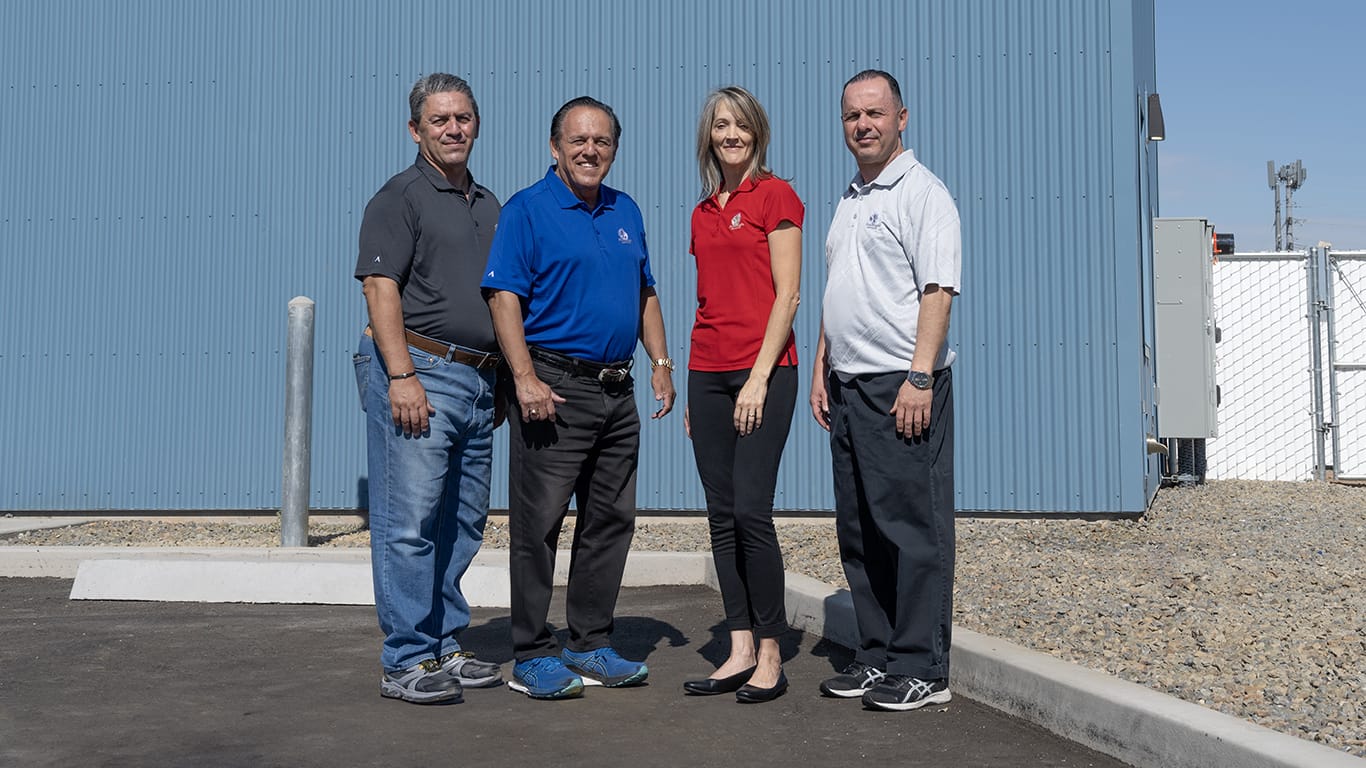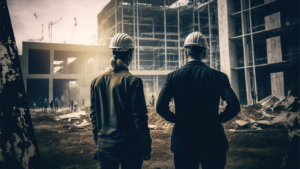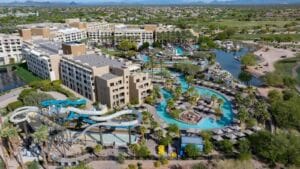The Alvarez family has a rich entrepreneurial history in Arizona that dates back to the 1880s. Since 1978, Martin Alvarez Sr. has successfully led the family business as founder and CEO of Sun Eagle Corporation. Now, his sons, John and AJ Alvarez, are ready to carry on this chapter of their family’s story in their respective positions as president and vice president of the family-owned construction business. The father and sons trio at Sun Eagle are proud to help build the Valley through the company’s work as a general contracting and construction management firm. In recent years, Sun Eagle has helped its clients construct many important community gathering places including the Cesar Chavez Community Center and Phoenix Fire Station 55. Az Business Leaders talks with John and AJ Alvarez to get their outlook for the Arizona construction sector in 2025 and beyond.
Az Business Leaders: What trends have you seen this year continuing into 2025?
John Alvarez: “So right now in, in the Valley, and not just the Valley around the whole country, everything is more expensive, irregardless of it being construction, just when you go grocery shopping, when you buy gas, when you buy toilet paper, whatever, it’s more expensive. That has also trended upwards in the construction industry for sure. If you build a building now versus five or 10 years ago, it’s going to be more expensive. So the trend with the owners we deal with is how do we maximize our money? We build a lot of community centers and they may want to maximize it by seeing how many different purposes can we use in this room? When we do the design, can we make this a room where we could have a folding partition? It’s going to be a 3,000 square foot room, but if we also build a new accordion partition down the middle, then we can also have other smaller purposes in that room. So we’re seeing a lot of owners kind of challenge us to ‘how do we increase the design, not square footage and not spending any more money, but how do we increase what we’re getting with the dollars that we’re spending?’”

Sun Eagle Corporation’s Martin Alvarez, Sr., CEO and president; Laurie Gordon, office manager; John Alvarez, vice president; and AJ Alvarez, vice president. (AZ Big Media photo)
Az Business Leaders: How have supply chain shortages affected the construction industry?
John Alvarez: “They have impacted us quite a bit as an industry and as a company, but it didn’t start yesterday. This has been going on for five years and even longer in some instances. So you have to have developed a plan. And so what we are doing is we’re buying a lot of material and equipment early in the building process. We may buy air conditioning units and just store them while we’re building the building. We don’t need them in February, we don’t need them until August, but we get them delivered to Phoenix, we put them in a warehouse, and then when we need them, they’re here. So our approach has been as soon as we can buy it and as soon as we can ship it and get it in Phoenix, we want it that way. We don’t have to worry about it because it’s gotten better, by the way, like during COVID, it was pretty bad. But we have a little saying in our company that we’d rather be looking at it then looking for it.”
AJ Alvarez: “This is part of the team’s collaborative process of what we call preconstruction services, we’re working with an owner and an architectural and design team and our subcontractors. So it’s a whole group of people, not just us going, ‘Hey, we’ll get something early, right?” Not that the industry was completely different 20 years ago, but back then when you’re selected, you go buy something. Well, with today’s lead times you might be building a house or office and the end date might have been originally 14, 18, 24 weeks. But this one piece is going to take 56 weeks to get here so we’re going, ‘Hey, there’s 52 weeks in a year people. It’ll take longer than the project might take to build.’ So that’s a part of the process and you have to collaborate, you have to be working with them. It’s such a team effort because you have to buy it maybe before we get to a final number. We have to work with them because we have to purchase equipment before we even really break and hit the ground. It really is all the way around a lot of moving pieces to make one thing happen.”
Az Business Leaders: Has there been demand for sustainable construction this year?
AJ Alvarez: “I think clients would all want that but there is a cost associated with it. It all comes back to, ‘We’re a city, we’re an owner, we have only this many dollars but we want this many things.’ And then if you add on the LEED component, which for the future carbon foot emission, the whole thing, down the road is better. Wait a minute though, that building would cost X but now if I want LEED criteria followed, it’s going to cost more.”
John Alvarez: “The answer is actually yes, from our perspective, because of what we do. Most of what we build will be around for 30 to 50 years so it has to be sustainable and so clients have kind of gotten into that mindset. AJ is right, there’s a whole other level of design and construction for getting certification and a LEED label on your project, which is true. We haven’t seen much of an increase in that, but most of our clients are very big on sustainability and having us help them optimize our options. Like a roof system for example. This roof system will last 10 years, this other roof system will last 30 years. Ok, what’s the cost difference in those two different systems? And is it worth us to spend the money for the 30 year roof when, well, we could just replace the roof every 10 years. Well, if you got the 30 year roof, you’re gonna pay another 25% as opposed to 300% to replace it. It’s been almost 25 years I’ve been doing this and I don’t see that changing.”
Az Business Leaders: Has AI made its way into the construction industry? In what ways do you see it being used in the near future?
John Alvarez: “AI is here. We’ll just use an example, a brand new building and it’s gonna be a two story building that’s 40,000 square feet. There is technology, and it may not be Al, that can build the entire building in a model on a computer before you ever do anything out in the field. And so what we use it for is we try to look at how everything’s going to interact. In every ceiling is piping. There’s mechanical piping, there’s plumbing, there’s electrical piping, fire sprinkler piping, but all of that has to work in that space. That sounds really easy until you start realizing, well, the bottom of this and the top of this, there’s only 18 inches and you have to fit it all. And so when you build the AI model, it will put all that piping in there. And what it’ll do is it’ll say, ‘Hey, there’s a clash right here. The fire sprinkler and the duct work, there’s going to be a problem right here.’ Knowing that before we ever start construction is phenomenal. It’s a phenomenal opportunity to be able to go, ‘Ok. Well, we’re gonna lower this piping, we’re gonna raise this pipe and then there’s no conflict anymore.’ There’s a lot of different terms for it, but Al is only going to increase our ability to see those kinds of things and beyond things that people haven’t even thought about. I’m not sure that it’s technically AI that I just described, but it’s coming, whatever industry, and construction is no different. Al is coming and it’s going to impact our industry, our company, everything eventually. How? I don’t know today but I’m excited to be part of it to see it unfold.”




